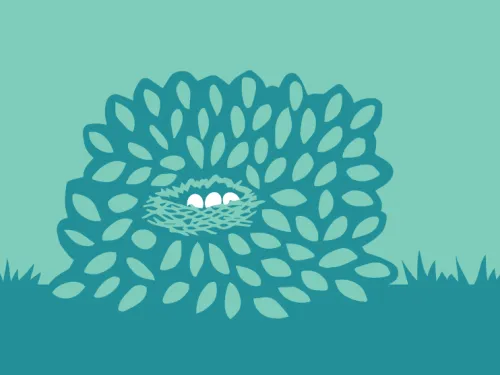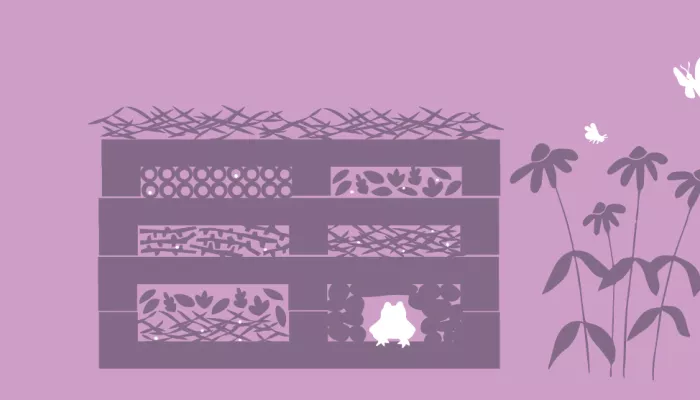
How to provide bushes for nesting birds
In the spring, birds choose the best locations to build nests, so why not offer them a safe place to settle?

Build your own bug mansion and attract a multitude of creepy crawlies to your garden.
An average garden accommodates more than 2,000 different species of insect! Very few of these creatures cause significant damage to our prized plants, and there are many more insects that actually help us to control the ones that do! By providing the right habitats, we can greatly increase the number of ‘beneficial’ insects in the garden.
One way to increase the comfort of your patch for insects is to build them a bug mansion.
Some invertebrates like cool, damp conditions, while others prefer the sun. To cater for as many of them as possible, site the mansion where some of it will catch the sun, but the rest will be in the shade under a tree or near a hedge, for example. Choose a level, even surface to build it on – the mansion may end up fairly heavy, so it will need a firm base.
Why not plant some nectar-rich flowers in and around your bug mansion to provide food for butterflies and bees?
The basic framework is made of wooden pallets. Try to use recycled or reclaimed materials where you can. The mansion does not need to be more than five pallets high. If you place the bottom pallet upside down, this should create larger openings at the ends, which can be also be used for a hedgehog house. Although the structure should be stable, you might want to secure each pallet to the one below.


In the spring, birds choose the best locations to build nests, so why not offer them a safe place to settle?

Set up a ‘nectar café’ by planting flowers for pollinating insects like bees and butterflies

Nestboxes can harbour parasites so it is good practice to take them down at the end of the season and give them a clean. Likewise it is important to keep bird feeders clean to stop the spread of diseases.